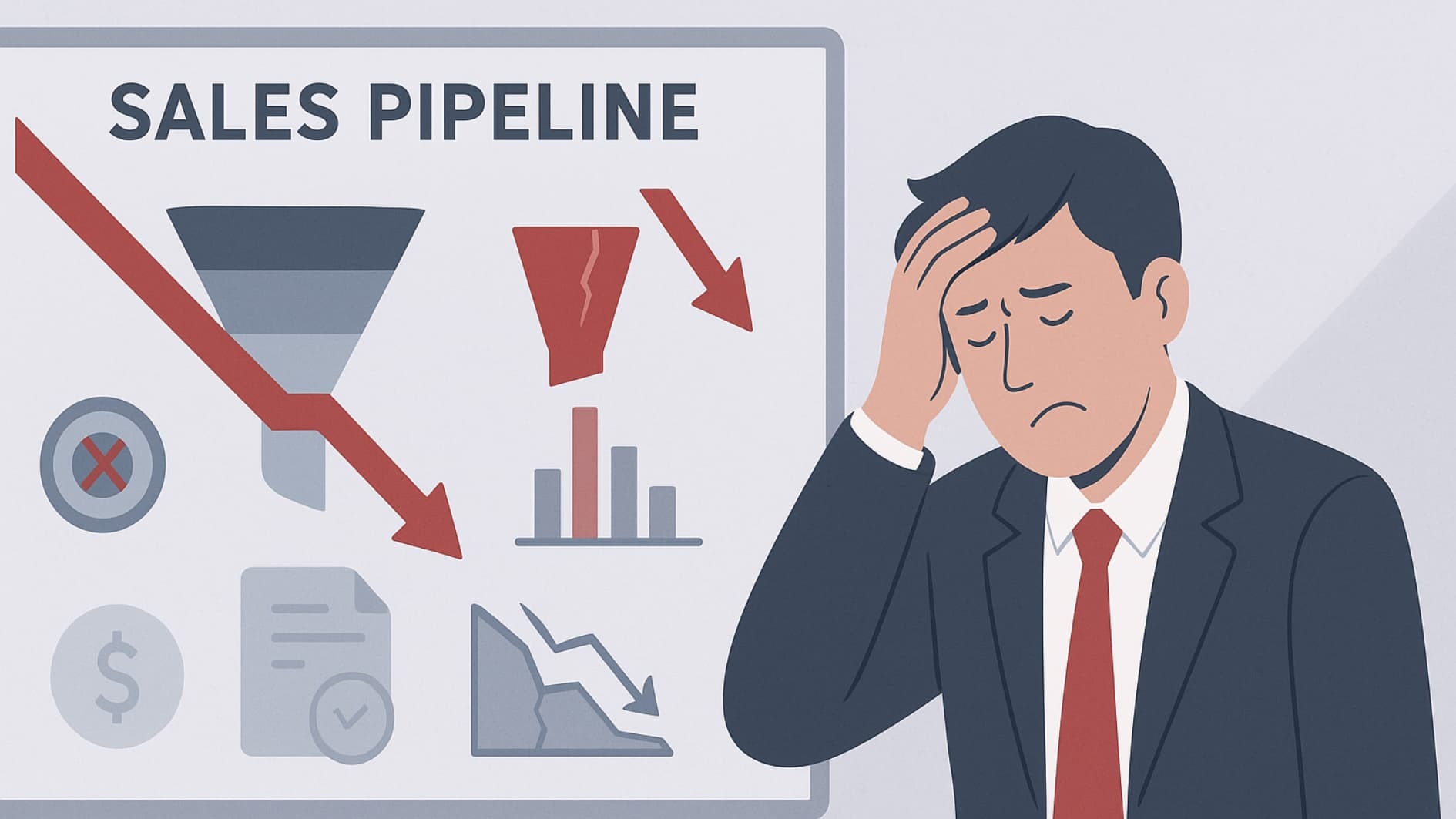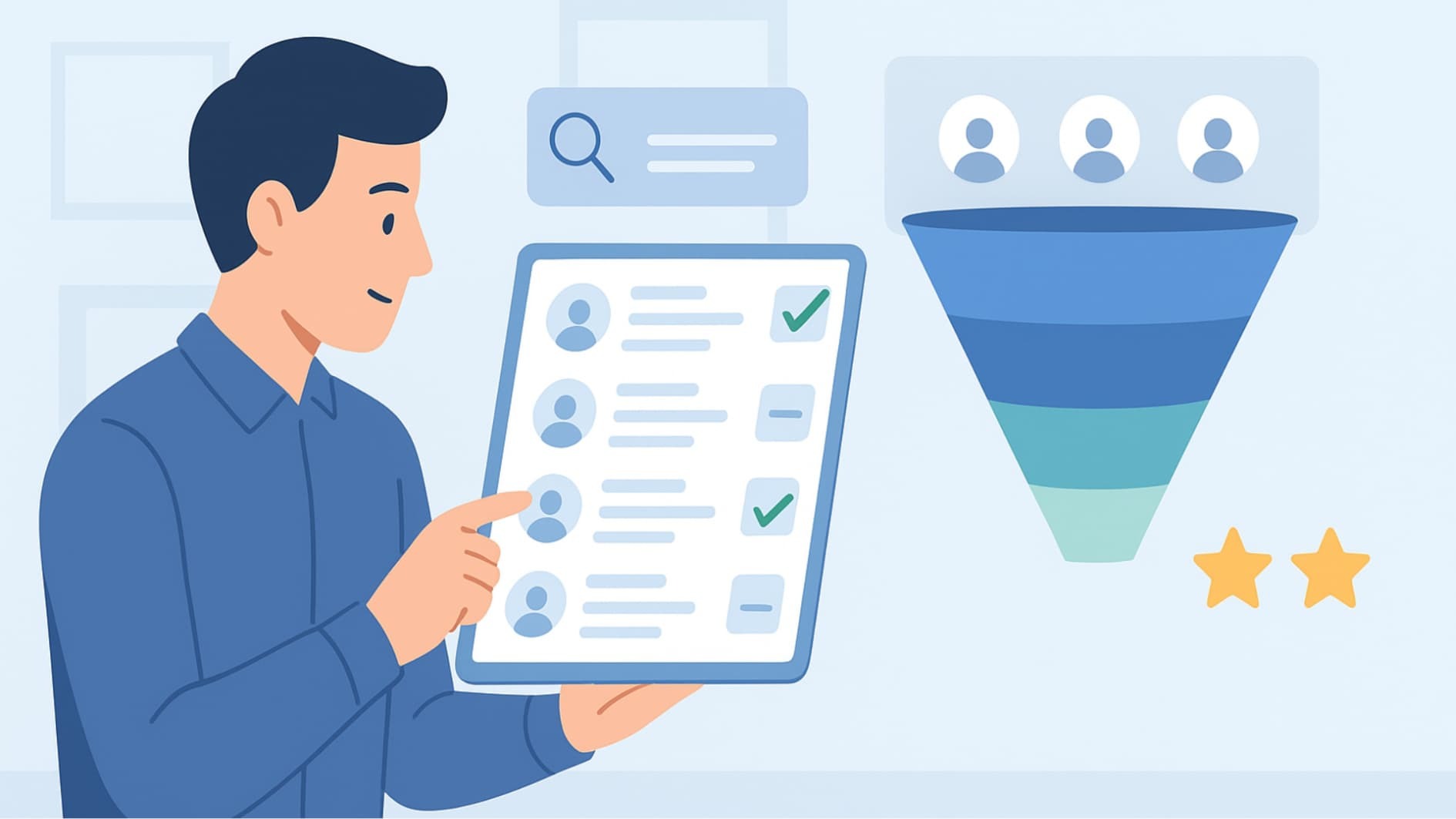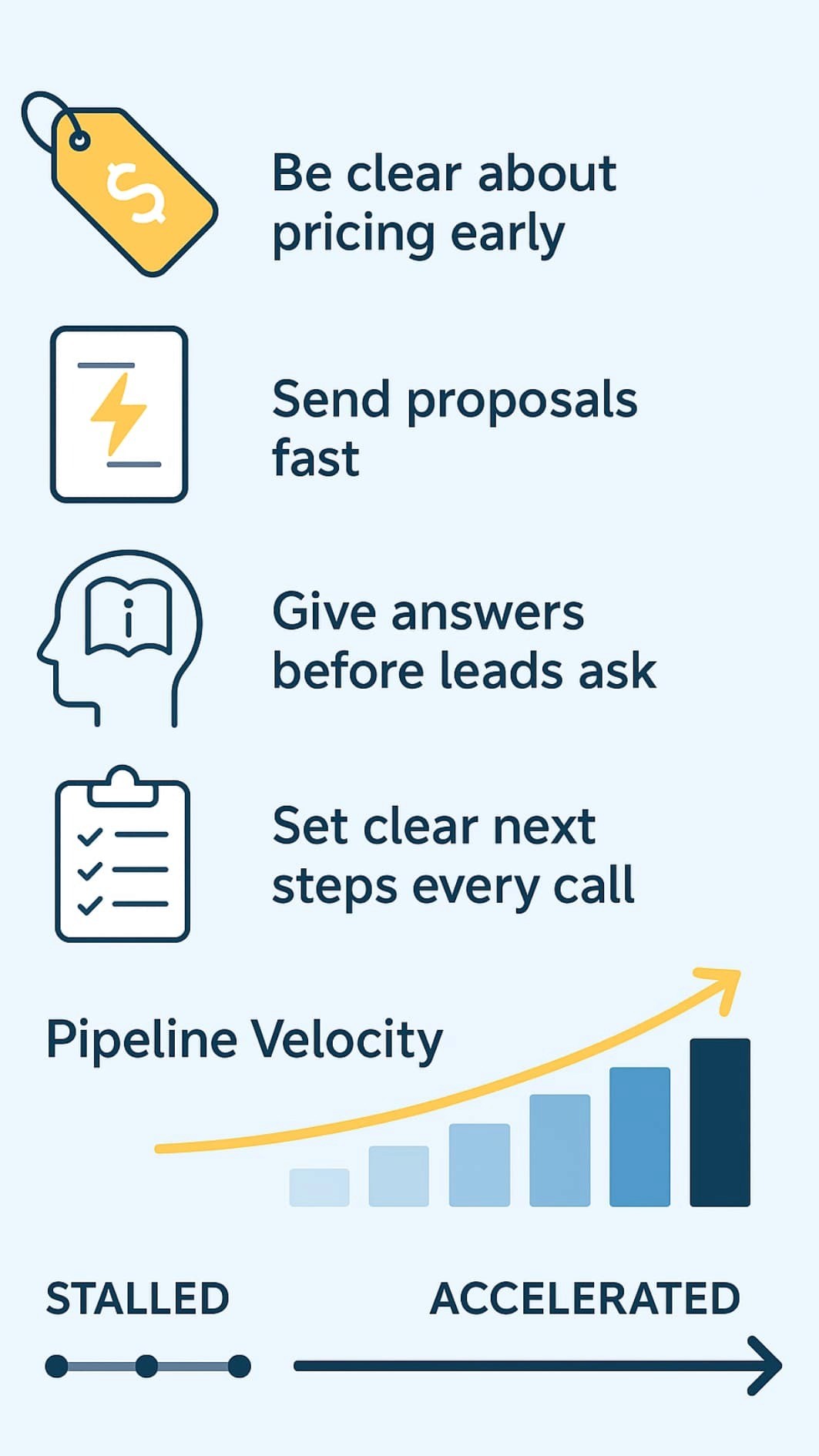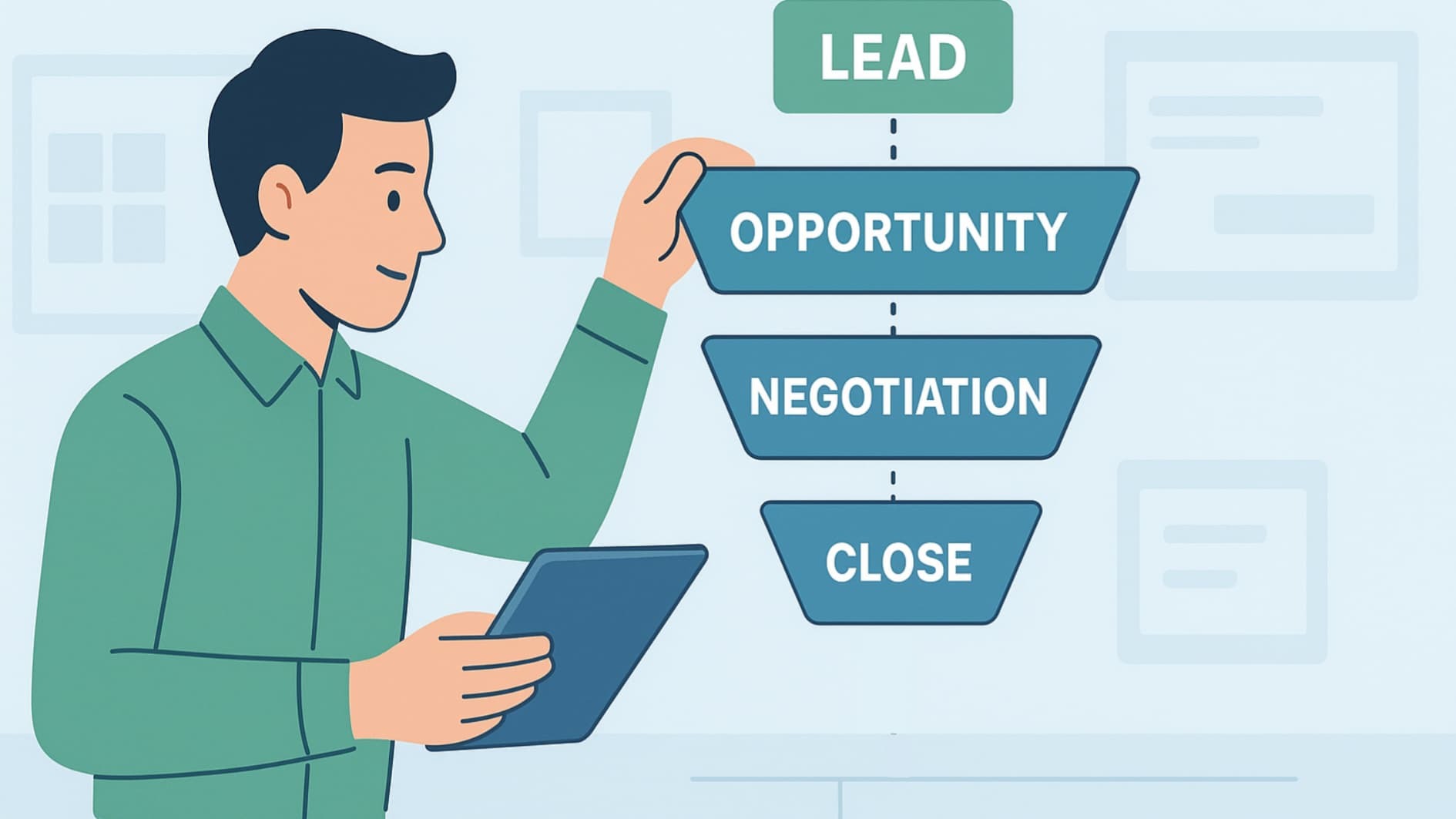Pipeline Generation Tactics
A healthy sales pipeline keeps a business growing. When your pipeline is full of good leads that move smoothly through your sales process, your sales reps close more deals and hit their sales goals. But if your pipeline fills up with old leads or wrong info, things slow down and win rates drop.
At Hyperke, we’ve worked with many SaaS and service companies to clean up their pipelines. We help them focus on the right leads and speed up their sales cycles.
If you want to learn how to fix your sales pipeline and boost your sales, keep reading.
Key Takeaways
Keep your pipeline clean. Regularly remove stale leads and update deal info to avoid pipeline bloat and inaccurate forecasts.
Qualify leads well. Use clear rules like Need, Budget, Authority, and Timeline to focus on high-potential opportunities and improve your win rates.
Speed up your sales cycles. Clear pricing, quick proposals, proactive info sharing, and setting next steps help move deals faster and increase sales success.
The High Cost of an Unhealthy Sales Pipeline

A messy pipeline wastes time and money. When sales reps chase bad leads or deals stay stuck in early stages, it hurts your sales results. According to a 2025 report, 63% of sales managers admit their organizations struggle with pipeline management, resulting in missed revenue and inaccurate forecasts.[1] Sales managers find it hard to trust their forecasts because the sales data is wrong or the pipeline is too full of weak leads.
We’ve seen companies lose up to 20% of their revenue because their pipeline was full of problems. When leads don’t show clear buying signals or aren’t qualified well, sales reps get frustrated. The sales cycle gets longer, and the average deal size often shrinks because the team spends time on the wrong leads.
One client we worked with had hundreds of leads that hadn’t been contacted in months. Their win rate was under 10%. After cleaning their pipeline and focusing on good leads, their win rate doubled in six months.
The cost of a bad pipeline is high. Wasted resources, bad forecasts, and missed sales goals can stop your growth. Keeping a clean pipeline should always be a priority.
Core Strategies for Pipeline Health
Strategy | Key Action | Metric to Watch |
Pipeline Hygiene | Remove old leads, update info, assign owners | Pipeline Hygiene Score |
Lead Qualification | Use strict rules (need, budget, authority) | Qualification Rate |
Lead Nurturing | Send personal messages, share useful info | Stage Conversion Ratios |
Sales Cycle Speed | Clear prices, quick proposals, share info early | Pipeline Velocity |
Pipeline Hygiene: Keeping Your Data Clean and Accurate
Think of pipeline hygiene like cleaning your room. If you leave things messy, you waste time looking for what you need. Same with your sales pipeline. Old leads or wrong info slow down your sales reps.
At Hyperke, we watch for leads that have not been contacted for 90 days or more. Our system flags these leads so the sales team can try to reach out again, update the info, or remove them. This keeps the number of leads manageable and focused on good opportunities.
Updating means checking phone numbers, emails, deal stage, and when the deal might close. Sometimes deals stall because no one is clear who owns them. Every deal should have a sales rep responsible for moving it forward.
Here’s what you can do:
Set rules for when a lead is “stale” (like no contact for 90 days).
Use your CRM to find and flag stale leads.
Check and update deal info often.
Make sure every deal has a clear owner.
Keeping your pipeline clean helps sales leaders trust their numbers and lets sales reps focus on leads that matter.
Qualifying Leads: Focusing on High-Potential Opportunities

Not every lead is worth chasing. Spending time on unqualified leads lowers your win rates and wastes resources. At Hyperke, we use simple rules called NBAT: Need, Budget, Authority, and Timeline.
You want to make sure the lead:
Really needs your product or service
Has the money to buy it
Is the person who decides or influences buying
Plans to buy soon enough
We score leads based on these points. Leads that don’t meet the rules don’t move past early stages. For example, leads with no budget should not get proposals. This keeps your pipeline full of good leads and helps your sales reps close more deals.
Nurturing Leads: Building Relationships and Driving Engagement
Even good leads need care. Nurturing helps build trust and keeps leads interested. This helps your win rate go up and your sales cycle get shorter.
We send messages that fit each lead’s needs. Sharing stories or case studies about how you helped others in their industry works well. For example, sending a case study about how you helped a similar company can make a lead feel more confident.
Automated email campaigns keep leads engaged without burdening the sales reps. These emails might include tips, invitations to try a free trial, or helpful articles.
Nurturing keeps leads moving through the sales funnel, increasing how many move to the next stage.
Shortening the Sales Cycle: Removing Friction and Accelerating Deals

Long sales cycles mean deals can stall or prospects might go to competitors. Shortening your sales cycle helps close deals faster and improves pipeline velocity.
At Hyperke, we teach sales teams to clear roadblocks. Being upfront with pricing helps leads decide faster. Getting proposals out quickly keeps the deal moving.
We also encourage sharing important info before leads ask. This can be product details, testimonials, or answers to common questions.
Always finish sales calls by setting clear next steps. This keeps deals moving and avoids delays.
To sum it up:
Be clear about pricing early.
Send proposals fast.
Give answers before leads ask.
Set clear next steps every call.
This speeds up sales and helps your team reach sales targets. Studies show that reducing sales cycle length can increase revenue growth by up to 18%, confirming how accelerating deals is critical to steady pipeline velocity.[2]
Monitoring and Metrics: Measuring Pipeline Health
You can’t fix problems you don’t see. Tracking key numbers helps sales leaders spot what works and what doesn’t.
Here are key metrics to watch:
Contact Rate: Aim for over 30%. Shows how many leads your team connects with.
Qualification Rate: Should be above 50%. Measures how many leads meet your rules.
Stage Conversion Ratios: Tracks how many leads move to the next step.
Close Rate: Usually between 11% and 40%. Shows how many deals close.
Pipeline Velocity: How fast deals close compared to your goals.
Also check your Pipeline Hygiene Score. This measures how fresh and accurate your sales data is. Scores over 80% mean your pipeline is healthy.
We hold regular pipeline reviews, usually weekly, to talk about these numbers. Using sales tools that track and alert automatically saves time and keeps data accurate.
Building a Healthy Pipeline Structure

A good pipeline needs structure. Without it, leads get lost or stuck.
Make sure leads enter your pipeline through focused lead generation strategies. Leads from social media, emails, or calls should be high quality and meet initial qualification.
Define each sales stage clearly. Everyone should know when to move deals forward or remove them.
Use quality gates to filter out weak leads early. This saves your sales reps’ time and keeps them focused on closing deals.
Finally, keep deals moving. Sales cycles vary, but no deal should stay stuck for long. Steady movement keeps your forecasts reliable.
FAQ
How can we improve pipeline health in our sales process?
A healthy sales pipeline thrives on discipline and consistent attention. Our sales team starts by mapping out lead sources, from social media to industry connections. We track sales cycle length, lead velocity, and follow-up response times. Sales reps meet weekly to review their numbers and share what's working.
Regular pipeline reviews help catch any deals getting stuck or moving too slow. It's not just about having lots of leads, it's about having the right ones moving steadily through our pipeline stages.
What role do sales reps and sales managers play in pipeline management?
Sales reps own their portion of the pipeline, working daily with prospects from early stages through closing deals. They're responsible for qualifying leads, updating deal size estimates, and moving opportunities forward.
Our sales managers take a wider view, they analyze pipeline coverage ratios, coach reps on sales strategies, and ensure the total number of opportunities can hit sales targets. Everyone works from the same sales data to make decisions about where to focus time and energy.
How can we use lead qualification to boost win rates?
Getting lead qualification right makes everything else easier. We score leads based on how well they match our ideal customer profile and their engagement with our content. Sales reps look for clear intent signals like viewing pricing pages or requesting a free trial.
This focus on quality over quantity helps maintain a healthy conversion rate, typically above 25% from qualified lead to closed deal. The sales team reviews lead scoring criteria quarterly to keep it aligned with what drives sales success.
What strategies help maintain a healthy pipeline and high conversion rate?
Running a tight pipeline means staying on top of the basics. We clean out stale opportunities monthly and check pipeline velocity metrics weekly. The sales team has clear milestones for moving deals between pipeline stages. Key metrics like average deal size and win rates get reviewed in regular sales meetings.
Our marketing and sales work together on lead generation strategies, making sure we're targeting prospects who match successful past deals. Pipeline reviews catch potential issues early, before they impact revenue objectives.
Conclusion
Keeping your sales pipeline healthy means your sales reps work on the right leads, your sales managers make smart decisions, and your business hits its revenue goals. With a healthy pipeline, your sales reps focus on good leads, sales managers make smart choices, and your business hits its revenue goals. Start cleaning your pipeline, set clear lead rules, keep leads engaged, and speed up your sales process.
At Hyperke, we’ve seen how focusing on pipeline hygiene, lead qualification, nurturing, and faster sales cycles improves win rates, average deal size, and sales velocity.
Want your sales team to close more deals? Talk to Hyperke and start fixing your pipeline today. You’ll see the difference fast.
References
https://forecastio.ai/blog/sales-pipeline-metrics
https://www.superoffice.com/blog/sales-pipeline-management-tips/
